-
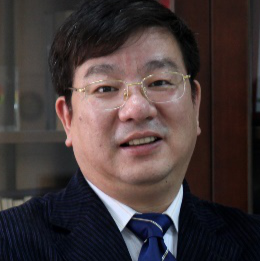
 赵东元简 历:赵东元教授,1963 年出生于沈阳市。1980年考入吉林大学化学系,1984年获得理学学士学位,1987年获吉林大学化学系理学硕士学位。1990年获吉林大学和大连化学物理研究所物理化学专业理学博士学位。1993 ~ 1994年在以色列魏兹曼科学院化学物理系做博士后。1995 ~ 1996年在美国休斯顿大学化学系做博士后。1996 ~ 1998年在美国加州大学圣芭芭拉分校材料系和化学系做博士后。1998年12月复旦大学教授;2000年入选教育部长江“特聘教授”,2007年被增选为中科院院士。2010年被增选为第三世界科学院(TWAS)院士。主要从事沸石分子筛、纳米介孔材料合成、结构和在催化、电池、生物、水处理等能源方向应用的研究工作。在国际重要刊物上发表SCI论文700余篇,获中国专利授权39项。论文被引用近9.8万次 (h index = 150)。被ISI Web of Science列为近十年100名引用率最高的化学家之一(排名65),被汤森路透社列为全球2011-2018化学、材料两个领域高被引科学家;也被列为最具国际影响力的中国科学家。获国家自然科学二等奖(2004);发展中国家科学院TWAS化学奖(2008);国际介观结构材料协会IMMA成就奖(2008);何梁何利科学进步奖(2009);印度化学会Rao Award(2013);世界科学院科学奖TWAS-Lenovo科学奖(2016);中国化学会-化学贡献奖(2017);中国分子筛成就奖(2017);国际胶体界面科学Darsh Wasan Award(2018);国际Khwarizmi International Award (KIA) (2019)。曾任国际介观结构材料协会IMMA主席,国际沸石协会理事,英国皇家化学会Journal of Materials Chemistry主编(Editor-in-Chief),现任国际刊物ACS Central Science编辑,十几种国际重要刊物如:Journal of The American Chemical Society、Joule等国际刊物的编委、顾问编委。http://www.mesogroup.fudan.edu.cn
赵东元简 历:赵东元教授,1963 年出生于沈阳市。1980年考入吉林大学化学系,1984年获得理学学士学位,1987年获吉林大学化学系理学硕士学位。1990年获吉林大学和大连化学物理研究所物理化学专业理学博士学位。1993 ~ 1994年在以色列魏兹曼科学院化学物理系做博士后。1995 ~ 1996年在美国休斯顿大学化学系做博士后。1996 ~ 1998年在美国加州大学圣芭芭拉分校材料系和化学系做博士后。1998年12月复旦大学教授;2000年入选教育部长江“特聘教授”,2007年被增选为中科院院士。2010年被增选为第三世界科学院(TWAS)院士。主要从事沸石分子筛、纳米介孔材料合成、结构和在催化、电池、生物、水处理等能源方向应用的研究工作。在国际重要刊物上发表SCI论文700余篇,获中国专利授权39项。论文被引用近9.8万次 (h index = 150)。被ISI Web of Science列为近十年100名引用率最高的化学家之一(排名65),被汤森路透社列为全球2011-2018化学、材料两个领域高被引科学家;也被列为最具国际影响力的中国科学家。获国家自然科学二等奖(2004);发展中国家科学院TWAS化学奖(2008);国际介观结构材料协会IMMA成就奖(2008);何梁何利科学进步奖(2009);印度化学会Rao Award(2013);世界科学院科学奖TWAS-Lenovo科学奖(2016);中国化学会-化学贡献奖(2017);中国分子筛成就奖(2017);国际胶体界面科学Darsh Wasan Award(2018);国际Khwarizmi International Award (KIA) (2019)。曾任国际介观结构材料协会IMMA主席,国际沸石协会理事,英国皇家化学会Journal of Materials Chemistry主编(Editor-in-Chief),现任国际刊物ACS Central Science编辑,十几种国际重要刊物如:Journal of The American Chemical Society、Joule等国际刊物的编委、顾问编委。http://www.mesogroup.fudan.edu.cn
题 目:功能介孔材料的界面组装
摘 要:功能介孔材料不仅具备介孔材料的独特性质,如高比表面积、孔道尺寸和孔容均一可控,而且具有无机功能纳米颗粒优异的光学、电学、磁学等特性。因此多级结构功能介孔材料在催化、吸附、分离、生物医药等众多领域中都有广阔的应用前景。这里,我们主要阐述近年来在界面组装调控实现取向组装可控合成多级结构功能介孔材料方面的研究进展。基于界面组装调控这一核心思想,我们发展了一系列合成多级结构功能介孔材料新方法,包括微乳限域自组装法、液-液界面两相法、挥发驱动定向组装、介孔各向异性生长法、界面驱动定向组装等。利用这些新型合成方法,能够可控制备一系列新型多级结构功能SiO2、TiO2、C基介孔材料,如核@壳、蛋黄@壳、多层核壳、三维花束状多级结构等,还包括双面神、半球、中空单开口等非对称多级结构。所制备的一系列多级结构功能介孔材料不仅形貌独特、均一,而且具有可控的介观孔道结构、高比表面积、大的孔容和开放的孔道。正是由于其独特的结构及功能性,使得这些材料在催化、吸附、分离、光电转化与存储及生物医药等领域展现出非常好的应用前景。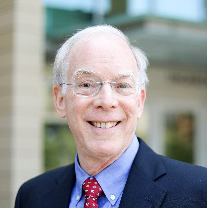
 Bruce Dunn简 历:Bruce Dunn, Nippon Sheet Glass Professor of Materials Science and Engineering at UCLA. Prior to joining UCLA, he was a staff scientist at the General Electric Research and Development Center. His research interests concern the synthesis of inorganic and organic/inorganic materials, and the characterization of their electrical, optical, biological and electrochemical properties. A continuing theme in his research is the use of sol-gel methods to synthesize materials with designed microstructures and properties. His recent work on electrochemical energy storage includes three-dimensional micro batteries and pseudocapacitor materials for high rate energy storage. He has received a number of honors including a Fulbright research fellowship, invited professorships at the University of Paris, the University of Bordeaux, the University of Toulouse, Shinshu University and two awards from the Department of Energy for outstanding research in Materials Science. He is a Fellow of the American Ceramic Society, the Materials Research Society and a member of the World Academy of Ceramics. In addition to serving on the Board of Reviewing Editors at Science, he is a member of the editorial boards of Advanced Energy Materials, Solid State Ionics, Advanced Electronic Materials and Journal of the American Ceramic Society.
Bruce Dunn简 历:Bruce Dunn, Nippon Sheet Glass Professor of Materials Science and Engineering at UCLA. Prior to joining UCLA, he was a staff scientist at the General Electric Research and Development Center. His research interests concern the synthesis of inorganic and organic/inorganic materials, and the characterization of their electrical, optical, biological and electrochemical properties. A continuing theme in his research is the use of sol-gel methods to synthesize materials with designed microstructures and properties. His recent work on electrochemical energy storage includes three-dimensional micro batteries and pseudocapacitor materials for high rate energy storage. He has received a number of honors including a Fulbright research fellowship, invited professorships at the University of Paris, the University of Bordeaux, the University of Toulouse, Shinshu University and two awards from the Department of Energy for outstanding research in Materials Science. He is a Fellow of the American Ceramic Society, the Materials Research Society and a member of the World Academy of Ceramics. In addition to serving on the Board of Reviewing Editors at Science, he is a member of the editorial boards of Advanced Energy Materials, Solid State Ionics, Advanced Electronic Materials and Journal of the American Ceramic Society.
题 目:Energy Storage in Nanoscale Pseudocapacitive Materials
摘 要:The prospect of developing materials with the energy density of batteries and the power density and cycle life of electrical double-layer capacitors is an exciting direction that has yet to be realized. With these materials there is the promise of achieving charging in minutes to storage levels comparable to battery electrode materials. One pathway which offers the possibility for achieving this combination of properties is pseudocapacitance.
An underlying assumption with pseudocapacitive materials is that charge-storage kinetics are not characterized by semi-infinite diffusion. Instead, the ion diffusion length l and the diffusion coefficient D are considered to be related by l << (Dt)1/2, where t is diffusion time. There has been considerable success in creating nanoscale materials which exhibit pseudocapacitive properties. One reason for this is that when the thickness of the material is very small, i.e. less than the characteristic diffusion length, diffusion of redox reactions is governed by thin-layer electrochemistry. Under these conditions, faradaic reactions occur within a finite diffusion space and redox kinetics begin to resemble capacitive processes. We consider such materials to be ‘extrinsic pseudocapacitors’ in that materials which exhibit battery-type behavior as bulk solids, change their electrochemical characteristics and exhibit pseudocapacitive responses when reduced to nanoscale dimensions. This mechanism change has been associated with decreasing ionic and electronic diffusion distances, suppressing phase transitions, and increasing the number of available surface sites for Li+. In this paper, we will review extrinsic pseudocapacitive behavior for several nanoscale materials systems including MoO2, LiMn2O4 and MoS2 and show how their fast kinetics and pseudocapacitive responses arise from thin layer electrochemistry considerations. Pseudocapacitive materials fill an important gap in the energy storage field, namely having solids that possess the energy density of battery materials with the power density of capacitive materials. It is certain that interest in these materials will continue to expand as their unique combination of properties will meet the needs of several of the expected growth areas for energy storage.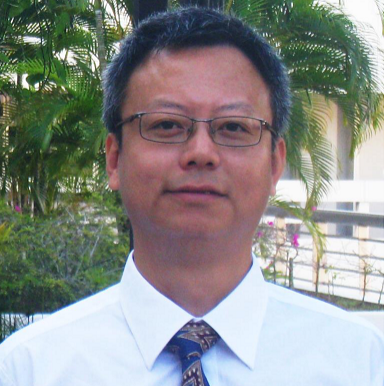
 Hua Zhang简 历:Dr. Hua Zhang joined the Department of Chemistry in City University of Hong Kong as a Chair Professor in 2019. His current research interests focus on the (crystal-)phase engineering of nanomaterials and controlled epitaxial growth of heterostructures, including the synthesis of ultrathin two-dimensional nanomaterials, novel metallic and semiconducting nanomaterials, novel amorphous nanomaterials and their applications in biosensors, clean energy and other fields. He has published 5 invited book chapters, 74 patent applications, and over 460 papers, among which 207 papers were published in IF>10 journals and 103 papers were published in 8<IF<10 journals. Some of his papers have been published in Science (1), Nat. Chem. (5), Nat. Catal. (1), Nat. Rev. Mater. (2), Nat. Commun. (8), Sci. Adv. (1), Nat. Protocols (1), Chem. Rev. (2), Chem. Soc. Rev. (12), Acc. Chem. Res. (2), J. Am. Chem. Soc. (16), Angew. Chem. Int. Ed. (28), Adv. Mater. (53), etc. Based on Web of Science on May 26, 2019, the total citation times of his papers are over 61,000 with H-index of 120. He has been invited to give more than 300 Plenary, Keynote or Invited Talks in international conferences, universities and institutes, and serve as the Session Chair. He has organized several tens of international conferences and served as the Symposium Chair or Conference Co-Chair. He is one of three Chairmen of the Editorial Board of ChemNanoMat (2015-). In 2015, he was elected as an Academician of the Asia Pacific Academy of Materials (APAM). In Nov. 2014, he was elected as a Fellow of the Royal Society of Chemistry (FRSC). In 2016, he was listed in the top 300 most cited researchers in the field of materials science and engineering (Elsevier Scopus). In 2015-2018, he was listed in the "Highly Cited Researchers" in Chemistry and Materials Science (Thomson Reuters). In 2015, he was listed as one of 19 “Hottest Researchers of Today” in the world in the World’s Most Influential Scientific Minds 2015 (Thomson Reuters, 2015). In 2014, he was listed in the "Highly Cited Researchers 2014" in Materials Science, and also listed as one of 17 “Hottest Researchers of Today” and No. 1 in Materials and More in the world in the World’s Most Influential Scientific Minds 2014 (Thomson Reuters, 2014). Moreover, he got the Young Investigator Award (Young Giants of Nanoscience 2016, Hong Kong), Vice-Chancellor’s International Scholar Award (University of Wollongong, Australia, 2016), ACS Nano Lectureship Award (2015), World Cultural Council (WCC) Special Recognition Award (2013), the ONASSIA Foundation Lectureship (Greece, 2013), Asian Rising Stars (15th Asian Chemical Congress, 2013), SMALL Young Innovator Award (Wiley-VCH, 2012) and Nanyang Award for Research Excellence (2011).
Hua Zhang简 历:Dr. Hua Zhang joined the Department of Chemistry in City University of Hong Kong as a Chair Professor in 2019. His current research interests focus on the (crystal-)phase engineering of nanomaterials and controlled epitaxial growth of heterostructures, including the synthesis of ultrathin two-dimensional nanomaterials, novel metallic and semiconducting nanomaterials, novel amorphous nanomaterials and their applications in biosensors, clean energy and other fields. He has published 5 invited book chapters, 74 patent applications, and over 460 papers, among which 207 papers were published in IF>10 journals and 103 papers were published in 8<IF<10 journals. Some of his papers have been published in Science (1), Nat. Chem. (5), Nat. Catal. (1), Nat. Rev. Mater. (2), Nat. Commun. (8), Sci. Adv. (1), Nat. Protocols (1), Chem. Rev. (2), Chem. Soc. Rev. (12), Acc. Chem. Res. (2), J. Am. Chem. Soc. (16), Angew. Chem. Int. Ed. (28), Adv. Mater. (53), etc. Based on Web of Science on May 26, 2019, the total citation times of his papers are over 61,000 with H-index of 120. He has been invited to give more than 300 Plenary, Keynote or Invited Talks in international conferences, universities and institutes, and serve as the Session Chair. He has organized several tens of international conferences and served as the Symposium Chair or Conference Co-Chair. He is one of three Chairmen of the Editorial Board of ChemNanoMat (2015-). In 2015, he was elected as an Academician of the Asia Pacific Academy of Materials (APAM). In Nov. 2014, he was elected as a Fellow of the Royal Society of Chemistry (FRSC). In 2016, he was listed in the top 300 most cited researchers in the field of materials science and engineering (Elsevier Scopus). In 2015-2018, he was listed in the "Highly Cited Researchers" in Chemistry and Materials Science (Thomson Reuters). In 2015, he was listed as one of 19 “Hottest Researchers of Today” in the world in the World’s Most Influential Scientific Minds 2015 (Thomson Reuters, 2015). In 2014, he was listed in the "Highly Cited Researchers 2014" in Materials Science, and also listed as one of 17 “Hottest Researchers of Today” and No. 1 in Materials and More in the world in the World’s Most Influential Scientific Minds 2014 (Thomson Reuters, 2014). Moreover, he got the Young Investigator Award (Young Giants of Nanoscience 2016, Hong Kong), Vice-Chancellor’s International Scholar Award (University of Wollongong, Australia, 2016), ACS Nano Lectureship Award (2015), World Cultural Council (WCC) Special Recognition Award (2013), the ONASSIA Foundation Lectureship (Greece, 2013), Asian Rising Stars (15th Asian Chemical Congress, 2013), SMALL Young Innovator Award (Wiley-VCH, 2012) and Nanyang Award for Research Excellence (2011).
题 目:Phase Engineering of Novel Nanomaterials
摘 要:In this talk, I will summarize the recent research on the phase engineering of nanomaterials in my group. It includes the first-time synthesis of hexagonal-close packed (hcp) Au nanosheets (AuSSs) on graphene oxide, the first-time synthesis of 4H hexagonal phase Au nanoribbons (NRBs), the synthesis of crystal-phase heterostructured 4H/fcc Au nanorods, the epitaxial growth of metals with novel phases on the aforementioned Au nanostructures, and the synthesis of amorphous/crystalline hetero-phase Pd nanosheets. In addition, the first-time synthesis of 1T'-MoS2 and 1T'-MoSe2 crystals have been achieved. Moreover, the phase transformation of transition metal dichalcogenide nanomaterials during our developed electrochemical Li-intercalation method will also be introduced. Interestingly, the lithiation-induced amorphization of Pd3P2S8 is also achieved. Currently, my group focuses on the (crystal) phase-based properties and applications in catalysis, surface enhanced Raman scattering, waveguide, photothermal therapy, chemical and biosensing, clean energy etc., which we believe are quite unique and very important not only in fundamental studies, but also in practical applications. Importantly, the concepts of crystal-phase heterostructures and hetero-phase nanomaterials are proposed.

 Xiaogang Peng简 历:Xiaogang Peng is currently a professor at Zhejiang University in China. He was a chair professor at the University of Arkansas before moving back to China in 2009. He received his B.S. (1987) and Ph.D. (1992) from Jilin University, China. His Postdoctoral experience followed by a position as Staff Scientist at UC Berkeley with Professor Paul Alivisatos between 1994 and 1999 brought him into the field of colloidal nanocrystals.
Xiaogang Peng简 历:Xiaogang Peng is currently a professor at Zhejiang University in China. He was a chair professor at the University of Arkansas before moving back to China in 2009. He received his B.S. (1987) and Ph.D. (1992) from Jilin University, China. His Postdoctoral experience followed by a position as Staff Scientist at UC Berkeley with Professor Paul Alivisatos between 1994 and 1999 brought him into the field of colloidal nanocrystals.
题 目:Colloidal Quantum Dots for Display Applications
摘 要:Quantum dots as solution-processible photo- and electro-excited emitters are promising and may impact many industrial sectors. Some industrial applications of quantum dots are in place in the recent years but it is far below their anticipated potential. Both photoluminescence and electroluminescence are based on generation and relaxation of the excited states. Thus, properties of excited states should be the key for design, synthesis, understanding, and applications of emitters. Specifically, as promising emissive materials, colloidal quantum dots rely heavily on their excited-state properties, instead of solely the ground-state properties. Realization of ideal excited states should be the optimal goal for synthesis of colloidal quantum dots.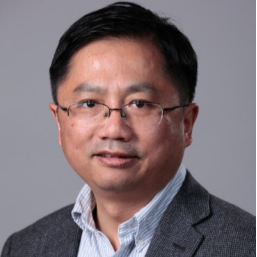
 Zhiyong Tang简 历:Dr. Zhiyong Tang is currently a Professor(2006-) in National Center for Nanoscience and Technology, China. He obtained his Bachelor and Master degree from Wuhan University in 1996. He then moved to Changchun Institute of Applied Chemistry of Science, Chinese Academy of Sciences with Professor Erkang Wang and obtained a Ph.D. degree in 1999. After six years as a postdoctoral fellow in Swiss Federal Institute of Technology Zurich, Oklahoma State University and University of Michigan, in November 2006 he won the 100-Talent Program, Chinese Academy of Sciences and started his current position. Professor Tang’s research interests are mainly focused on controllable synthesis, property manipulation and practical application of inorganic nanomaterials.
Zhiyong Tang简 历:Dr. Zhiyong Tang is currently a Professor(2006-) in National Center for Nanoscience and Technology, China. He obtained his Bachelor and Master degree from Wuhan University in 1996. He then moved to Changchun Institute of Applied Chemistry of Science, Chinese Academy of Sciences with Professor Erkang Wang and obtained a Ph.D. degree in 1999. After six years as a postdoctoral fellow in Swiss Federal Institute of Technology Zurich, Oklahoma State University and University of Michigan, in November 2006 he won the 100-Talent Program, Chinese Academy of Sciences and started his current position. Professor Tang’s research interests are mainly focused on controllable synthesis, property manipulation and practical application of inorganic nanomaterials.
题 目:Application of Supraparticles in Catalysis
摘 要:Supraparticles refer to the well-defined colloids, which are formed via self-assembly of two or more than two nanoparticles based on non-covalent interactions. The supraparticles are characteristic of controlled morphology, size and structure, and further possess unique optical, electrical, magnetic and catalytic properties. In this talk, I will summarize the recent work in our group, and discuss how to select varied functional building blocks, tune the spatial distribution of assembly units, as well as alter the electron or energy coupling between building blocks towards high performance photo-, electro- or thermo-catalysis.
 Liangti Qu简 历:Dr. Liangti Qu joined Beijing Institute of Technology (BIT) in 2009. Dr. Qu’s research mainly focuses on the synthesis, functionalization, and application of conjugated carbon-carbon nanostructures including conducting polymers, carbon nanotubes and graphenes. He has published more than 200 peer-reviewed research papers in prestigious journals such as Science, Nat. Rev. Mater., Nat. Nanotech., Nat. Commun., Angew. Chem. Int. Ed., Adv. Mater., J. Am. Chem. Soc. and so on. Awards and honors include New Century Excellent Talents in University (2009), Excellent Young Teachers in Universities by Fok Ying Tong Education Foundation (2012), National Science Fund for Distinguished Young Scholars (2013), and Chang Jiang Scholar of Ministry of Education, China (2014).
Liangti Qu简 历:Dr. Liangti Qu joined Beijing Institute of Technology (BIT) in 2009. Dr. Qu’s research mainly focuses on the synthesis, functionalization, and application of conjugated carbon-carbon nanostructures including conducting polymers, carbon nanotubes and graphenes. He has published more than 200 peer-reviewed research papers in prestigious journals such as Science, Nat. Rev. Mater., Nat. Nanotech., Nat. Commun., Angew. Chem. Int. Ed., Adv. Mater., J. Am. Chem. Soc. and so on. Awards and honors include New Century Excellent Talents in University (2009), Excellent Young Teachers in Universities by Fok Ying Tong Education Foundation (2012), National Science Fund for Distinguished Young Scholars (2013), and Chang Jiang Scholar of Ministry of Education, China (2014).
题 目:Functional Graphene Composites toward Energy and Environment Applications
摘 要: Graphene, with two-dimensional (2D) atom-thin structure of sp2-bonded carbon atoms, possesses excellent carrier mobility, large surface area, high light transparency, high mechanical strength and superior flexibility. Coupling the promising characters of graphene units into the macroscopic architectures is crucial for practical applications. In this report, we will present our effort on graphene regulation from chemical modification to microstructure control, from the morphology-designed macro-assemblies to their applications in functional energy and environment systems. These rationally regulated graphene sheets and well-constructed assemblies present the promising applications in functional energy-generating materials and devices, as well as the clean water generation systems. We hope that this report will promote further efforts toward fundamental research on graphene regulation and the new type of wide applications.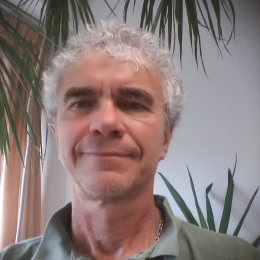
 Jean-Jacques Gaumet简 历:Jean-Jacques Gaumet is Professor of Chemistry at the University of Lorraine (Metz/Nancy, France). He received his PhD in physical chemistry in 1992 from the University of Franche-Comté, Besan?on, France. In 1993, he conducted a 16-month postdoctoral research at the National Institute for Environment and Resources in Tsukuba, Japan. He is currently developing research on elaboration of nanomaterials (semi-conductors, carbon dots) by microwave-assisted growth and characterization by mass spectrometry. He is also focussing on sustainability approach, circular economy and societal aspects on materials science. Since 1998, he is developing long term collaborations in USA, China and Northern Africa.
Jean-Jacques Gaumet简 历:Jean-Jacques Gaumet is Professor of Chemistry at the University of Lorraine (Metz/Nancy, France). He received his PhD in physical chemistry in 1992 from the University of Franche-Comté, Besan?on, France. In 1993, he conducted a 16-month postdoctoral research at the National Institute for Environment and Resources in Tsukuba, Japan. He is currently developing research on elaboration of nanomaterials (semi-conductors, carbon dots) by microwave-assisted growth and characterization by mass spectrometry. He is also focussing on sustainability approach, circular economy and societal aspects on materials science. Since 1998, he is developing long term collaborations in USA, China and Northern Africa.
题 目:Applications of Carbon Nanomaterials Elaborated from Biomass and their Applications for Energy and Environment
摘 要:Biomass originating from the photosynthesis of CO2 and water combined with solar light is the most efficient renewable carbon source on Earth, which allows for efficient production of carbon nanomaterials (CNs). CN applications are being exponentially developed in the domains of energy storage and conversion. More specifically, CNs are now clearly seen as alternative solutions to better-known semiconductor-nanomaterials. Carbon quantum dots (CQDs) and graphene [oxide] quantum dots (G[O]QDs) are also part of CNs, where it has been recently discovered that have both graphene oxide and quantum dots properties. Consequently, CQDs and G[O]QDs electronic and luminescent properties (e.g. wavelength-tunable emission, excellent photostability and a high quantum yield potential) are advantageously combined with chemical stability, water solubility and biocompatibility. Carbon nanotubes (CNTs) can be used for gas sensors, small molecular sensors and, photocatalytic reactions. We will present herein an overview about the preparation of CNs from various biomass wastes, which will serve as a pathway to solving environmental problems. After highlighting applications on energy and environment, we will go on to concepts on nanometrology in regards to specific CNs. Nanometrology is thus a logical step towards a complete monitoring of CN properties throughout their life-cycle. We will focus on joint physical and chemical characterization to explore the size, geometry and activity of these CNs. Finally, we will evaluate the potential use of some of these nanosystems at an industrial scale.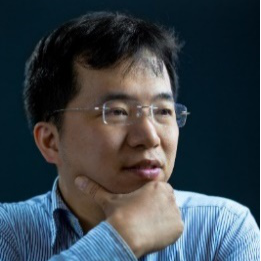
 张 强简 历:张 强,清华大学长聘教授,从事能源材料研究,尤其是金属锂、锂硫电池和电催化的研究。国家自然科学基金杰出青年基金获得者,中组部万人计划“青年拔尖人才”入选者,2017/2018年科睿唯安全球高被引科学家。担任国际期刊J Energy Chem编辑、Adv Mater Interfaces、Sci China Mater、Sci China Chem、Philos Trans A编委,Energy Storage Mater、Adv Funct Mater客座编辑。主持国家重点研发计划课题、自然科学基金、教育部博士点基金、北京市科委重点项目等。以第一/通讯作者在Adv. Mater., J. Am. Chem. Soc., Angew. Chem. Int. Ed., Nature Commun., Sci. Adv., Chem等发表SCI收录论文100余篇。所发表论文中61篇为ESI高引用学术论文。
张 强简 历:张 强,清华大学长聘教授,从事能源材料研究,尤其是金属锂、锂硫电池和电催化的研究。国家自然科学基金杰出青年基金获得者,中组部万人计划“青年拔尖人才”入选者,2017/2018年科睿唯安全球高被引科学家。担任国际期刊J Energy Chem编辑、Adv Mater Interfaces、Sci China Mater、Sci China Chem、Philos Trans A编委,Energy Storage Mater、Adv Funct Mater客座编辑。主持国家重点研发计划课题、自然科学基金、教育部博士点基金、北京市科委重点项目等。以第一/通讯作者在Adv. Mater., J. Am. Chem. Soc., Angew. Chem. Int. Ed., Nature Commun., Sci. Adv., Chem等发表SCI收录论文100余篇。所发表论文中61篇为ESI高引用学术论文。
题 目:The Marriage of Solid-State Electrolyte and Safe Lithium Metal Anodes in a Working Battery
摘 要:Li metal is extensively focused due to its ultrahigh theoretical capacity and the most negative electrochemical potential. Solid-state electrolyte exhibits enhanced safety relative to non-aqueous electrolyte. Therefore, the marriage of Li metal and solid-state electrolyte is expected to inherit the merits of both. However, the competitive solid-state lithium metal batteries encounter formidable challenges, including dendrite issues and poor solid-solid contact. Investigating the interdisciplinary issues of solid-state electrolyte and Li metal in integrated cells is necessary to realize the efficient and safe solid-state lithium metal batteries. This talk focuses on the energy chemistry issues generated from the marriage of Li metal and solid-state electrolyte, instead of their respective problems. Firstly, the issues generated from the marriage of lithium metal anode and solid-state electrolyte. Specific attentions are paid to the large interfacial resistance, uncontrolled dendrite growth, and low operation current/capacity. The primarily understanding the ionic channels in the composite electrolyte and space charge layers in the interfacial region are also included. Based on these dilemmas and working principles, emerging strategies to render solid-state lithium metal batteries are introduced. Finally, the general conclusion and perspective on the current limitations and recommended research of solid-state lithium metal batteries are presented.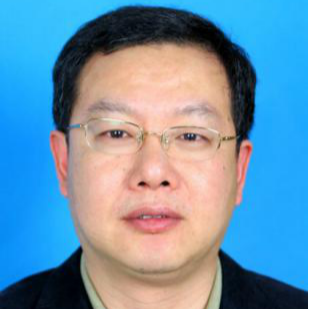
 王贤保简 历:王贤保,教授、博士生导师,国家二级教授。现任湖北大学材料科学与工程学院院长,教育部 “功能材料绿色制备与应用”重点实验室主任。教育部“新世纪优秀人才”、湖北省有突出贡献中青年专家、湖北省首批高端人才引领培养计划等人才项目。在碳纳米材料的可控性制备、太阳能光热转换材料、锂(硫)离子电池等领域开展了系统研究,先后在Angew. Chem. Int. Ed., Adv. Mater., Prog. Mater. Sci., J. Mater. Chem. A,Chem. Commun., Chem. Mater.等期刊发表论文150余篇,被SCI引用1800次,他引1500次,ESI高被引论文2篇。获授权专利30余项。曾获上海合成金属国际会议(ICSM2002) The Synthetic Metals Young Scientists Award和中国科学院院长特别奖。
王贤保简 历:王贤保,教授、博士生导师,国家二级教授。现任湖北大学材料科学与工程学院院长,教育部 “功能材料绿色制备与应用”重点实验室主任。教育部“新世纪优秀人才”、湖北省有突出贡献中青年专家、湖北省首批高端人才引领培养计划等人才项目。在碳纳米材料的可控性制备、太阳能光热转换材料、锂(硫)离子电池等领域开展了系统研究,先后在Angew. Chem. Int. Ed., Adv. Mater., Prog. Mater. Sci., J. Mater. Chem. A,Chem. Commun., Chem. Mater.等期刊发表论文150余篇,被SCI引用1800次,他引1500次,ESI高被引论文2篇。获授权专利30余项。曾获上海合成金属国际会议(ICSM2002) The Synthetic Metals Young Scientists Award和中国科学院院长特别奖。
题 目:基于碳基纳米复合材料的太阳能光热转化
摘 要:日益严重的环境恶化、气候异常和能源短缺,使开发利用新型、高效清洁的太阳能资源成为本世纪的科学面临的重大挑战课题。如何将低品位、分散不连续的太阳能转换成高品位的热能,以便最大限度地利用太阳能,成为突破太阳能光热应用的关键瓶颈。本工作设计合成具有高效稳定光热转换性能的碳基纳米复合材料,通过吸收太阳能,将水迅速汽化成水蒸气, 开发太阳能蒸汽技术,直接将低品位的太阳能转换成高品位的、应用价值巨大的热能和蒸汽能。这种太阳能蒸汽技术可以将超过90%的太阳能转化成蒸汽能,与当前的蒸汽涡轮机(24%)和太阳能电池光伏发电(15%)相比,具有极其重要的科学研究价值和十分巨大的市场开发前景。本工作可为简捷高效地利用太阳能资源提供一个全新的技术,初步探明太阳能蒸汽技术在污水处理、海水淡化等领域的应用前景。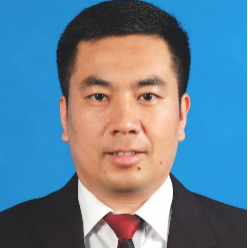
 董安钢简 历:董安钢,复旦大学化学系研究员/博士生导师。 2000和2003年复旦大学化学系本科和硕士毕业,2007年美国圣路易斯华盛顿大学获理学博士,2008-2010年在宾夕法尼亚大学从事博士后研究士,2010-2012年就职于伯克利国家实验室。2012年入选中组部青年千人计划和上海市千人计划。研究兴趣包括胶体纳米晶的合成与自组装、纳米晶超晶格及其衍生物在能源转化与存储中的应用。在包括Nature、Nat. Commun.、J. Am. Chem. Soc.、Nano Lett.等发表论文60多篇。现任Frontiers in Chemistry副主编。
董安钢简 历:董安钢,复旦大学化学系研究员/博士生导师。 2000和2003年复旦大学化学系本科和硕士毕业,2007年美国圣路易斯华盛顿大学获理学博士,2008-2010年在宾夕法尼亚大学从事博士后研究士,2010-2012年就职于伯克利国家实验室。2012年入选中组部青年千人计划和上海市千人计划。研究兴趣包括胶体纳米晶的合成与自组装、纳米晶超晶格及其衍生物在能源转化与存储中的应用。在包括Nature、Nat. Commun.、J. Am. Chem. Soc.、Nano Lett.等发表论文60多篇。现任Frontiers in Chemistry副主编。
题 目:纳米晶超晶体及其碳基衍生物
摘 要:作为胶体体系中最为常见的构建单元,纳米晶能够自发组装成周期性排列的超结构,又称“超晶体”,是目前化学材料领域的一个前沿研究热点。为了实现纳米晶超晶体在不同领域特别是能源领域的应用价值,需要有效调控超晶体的组成、结构、界表面性质、介观形貌等。基于此,我们在传统溶剂挥发诱导组装的基础上相继发展了气液界面组装、团簇诱导组装、限域外延组装等组装技术,开发出了二维超晶体薄膜、一维链状超晶体、管状超晶体等,极大丰富了低维纳米晶超晶体的结构;此外,我们还提出了配体分子原位碳化策略发展了一系列碳包覆超晶体及其介孔石墨烯骨架衍生材料,进一步拓展了超晶体材料在能源领域中的应用。
 Rufan Zhang简 历:Prof. Rufan Zhang is an assistant professor in the Department of Chemical Engineering, Tsinghua University. His research interests focus on the controlled synthesis and property study of carbon materials, energy storage, environmental protection, catalysis, etc. Prof. Zhang has published more than 44 peer-reviewed papers on prestigious journals such as Nature Nanotechnology, Nature Communications, Chemical Society Reviews, Accounts of Chemical Research, Advanced Materials, Nano Letters, ACS Nano, etc. Prof. Zhang received many prestigious honors and awards such as MIT Technology Review “35 Innovators Under 35”-China, Young Chemistry Awards by Chinese Chemical Society, the First Prize of the Natural Science Award for Outstanding Achievements of Scientific Research, Ministry of Education of China, Dimitris N Chorafas Foundation Award, Chorafas Foundation, Switzerland, Top 10 Academic Stars of Tsinghua University, Excellent Doctoral Dissertation of Tsinghua University, etc.
Rufan Zhang简 历:Prof. Rufan Zhang is an assistant professor in the Department of Chemical Engineering, Tsinghua University. His research interests focus on the controlled synthesis and property study of carbon materials, energy storage, environmental protection, catalysis, etc. Prof. Zhang has published more than 44 peer-reviewed papers on prestigious journals such as Nature Nanotechnology, Nature Communications, Chemical Society Reviews, Accounts of Chemical Research, Advanced Materials, Nano Letters, ACS Nano, etc. Prof. Zhang received many prestigious honors and awards such as MIT Technology Review “35 Innovators Under 35”-China, Young Chemistry Awards by Chinese Chemical Society, the First Prize of the Natural Science Award for Outstanding Achievements of Scientific Research, Ministry of Education of China, Dimitris N Chorafas Foundation Award, Chorafas Foundation, Switzerland, Top 10 Academic Stars of Tsinghua University, Excellent Doctoral Dissertation of Tsinghua University, etc.
题 目:Ultralong Carbon Nanotubes: Structures, Synthesis and Properties
摘 要:Ultralong carbon nanotubes (CNTs) usually refer to the horizontally aligned CNT arrays with lengths up to centimeters or even decimeters grown on flat substrates by chemical vapor deposition. With the optimized growing conditions, we successfully synthesized half-meter long CNTs. They have perfect structures and extraordinary electrical and mechanical properties. In addition, Optical visualization of individual ultralong CNTs by chemical vapour deposition of titanium dioxide nanoparticles was realized. Moreover, we found the macroscale superlubricity in centimeters long perfect double-walled CNTs under ambient conditions. Recently, CNT bundles with defect-free, neat, unifom oriented, continuous, and stress free structure were successfully prepared, which showed a tensile strength over 80 GPa.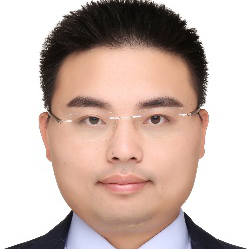
 魏展画简 历:魏展画,华侨大学材料科学与工程学院教授,2011年于厦门大学化学系获学士学位;2015年于香港科技大学化学系获博士学位,导师为杨世和教授;2015年9月至2016年5月间在新加坡南洋理工大学物理与应用物理系从事博士后研究,合作导师为熊启华教授。主要研究方向为钙钛矿电致发光器件和钙钛矿太阳能电池等,已在Nature, Energy & Environmental Science和Angewandte Chemie International Edition等期刊上发表研究论文30余篇。
魏展画简 历:魏展画,华侨大学材料科学与工程学院教授,2011年于厦门大学化学系获学士学位;2015年于香港科技大学化学系获博士学位,导师为杨世和教授;2015年9月至2016年5月间在新加坡南洋理工大学物理与应用物理系从事博士后研究,合作导师为熊启华教授。主要研究方向为钙钛矿电致发光器件和钙钛矿太阳能电池等,已在Nature, Energy & Environmental Science和Angewandte Chemie International Edition等期刊上发表研究论文30余篇。
题 目:组分空间分布管理法构建高效钙钛矿光电器件
摘 要:钙钛矿是一类分子式为ABX3的金属卤化物材料,因其材料成本低、发光颜色可调、光谱半峰宽窄和荧光量子效率高等优点,被认为是优良的LED发光材料,在平板显示和照明方面有巨大的应用潜力。受限于传统工艺方法中钙钛矿薄膜较差的成膜特性、相对较低的薄膜荧光量子效率和器件中不平衡的载流子注入效率等因素,前期报道的绿光和近红外光的钙钛矿LED器件的外量子效率都远远低于有机LED(OLED)和量子点LED(QLED)。为了克服上述困难并提高器件电光转换效率,提出了组分空间分布管理法,利用CsPbB3和CH3NH3Br在DMSO溶剂中迥异的溶解度差,一步法旋涂得到CsPbBr3@CH3NH3Br准核壳结构,CH3NH3Br壳层大幅减少了CsPbBr3晶体内的非辐射复合缺陷,提高了钙钛矿薄膜的发光效率;另一方面,通过在发光层和电子传输层间插入PMMA阻挡层,进一步改善了器件内的电子和空穴的注入速度匹配情况。通过上述优化,得到的钙钛矿LED器件的外量子效率超过了20%,低亮度下寿命超过100 h,极大地推动了钙钛矿LED的应用发展。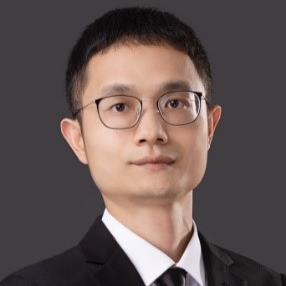
 徐 林简 历:徐 林,2004-2008年武汉理工大学材料物理专业本科,2008-2013年武汉理工大学材料物理与化学专业博士(导师:麦立强、张清杰、Charles M. Lieber),2011-2013年美国哈佛大学联合培养博士,2013-2016年美国哈佛大学博士后,2016-2017年新加坡南洋理工大学博士后,2017年至今武汉理工大学研究员。主要从事纳米新能源材料与器件的应用基础研究,在Nature Nanotech., Nature Commun., Adv. Mater., Nano Lett.等期刊发表学术论文40余篇。获2018年教育部自然科学一等奖(第二完成人)、2018年中国新锐科技人物知社特别奖,入选湖北省青年百人计划。题 目:纳米线界面电子/离子输运摘 要:电子与离子在界面的输运在能源和生物领域具有广泛的应用。例如,在电池材料中,电子/离子在电池内部界面的高效传输是高性能电池的关键。在生命体的细胞界面,电子/离子在细胞间的传递是生命活动得以正常运行的基础。微纳尺度界面的研究有利于从微观角度深入理解界面的物理、化学性质及其演变规律。纳米线作为一种典型的一维纳米结构,具有连续的表界面传输通道。因此,我们围绕纳米线界面输运,重点开展了纳米线界面的设计构筑、原位表征、界面电子/离子输运机理及其关键材料的合成。具体包括以下内容:① 打破传统电池设计思路,设计构筑基于芯片的单根纳米线电池,通过原位表征发现纳米线电子迁移和离子扩散通道受阻是导致电池容量衰减的本质。② 基于上述电池容量衰减机制,开发分级纳米线界面的构筑新方法,发现纳米线界面电子/离子双连续输运效应。将磁学和电化学结合,发现钠氧电池中纳米线界面的磁-电化学耦合作用机制。③ 将纳米线界面输运的研究从无机材料领域拓展到生物学领域,构建基于场效应晶体管的纳米线-生物界面,研发新型的三维柔性纳米线生物探针,证实了药物对细胞膜离子通道的调控机理。
徐 林简 历:徐 林,2004-2008年武汉理工大学材料物理专业本科,2008-2013年武汉理工大学材料物理与化学专业博士(导师:麦立强、张清杰、Charles M. Lieber),2011-2013年美国哈佛大学联合培养博士,2013-2016年美国哈佛大学博士后,2016-2017年新加坡南洋理工大学博士后,2017年至今武汉理工大学研究员。主要从事纳米新能源材料与器件的应用基础研究,在Nature Nanotech., Nature Commun., Adv. Mater., Nano Lett.等期刊发表学术论文40余篇。获2018年教育部自然科学一等奖(第二完成人)、2018年中国新锐科技人物知社特别奖,入选湖北省青年百人计划。题 目:纳米线界面电子/离子输运摘 要:电子与离子在界面的输运在能源和生物领域具有广泛的应用。例如,在电池材料中,电子/离子在电池内部界面的高效传输是高性能电池的关键。在生命体的细胞界面,电子/离子在细胞间的传递是生命活动得以正常运行的基础。微纳尺度界面的研究有利于从微观角度深入理解界面的物理、化学性质及其演变规律。纳米线作为一种典型的一维纳米结构,具有连续的表界面传输通道。因此,我们围绕纳米线界面输运,重点开展了纳米线界面的设计构筑、原位表征、界面电子/离子输运机理及其关键材料的合成。具体包括以下内容:① 打破传统电池设计思路,设计构筑基于芯片的单根纳米线电池,通过原位表征发现纳米线电子迁移和离子扩散通道受阻是导致电池容量衰减的本质。② 基于上述电池容量衰减机制,开发分级纳米线界面的构筑新方法,发现纳米线界面电子/离子双连续输运效应。将磁学和电化学结合,发现钠氧电池中纳米线界面的磁-电化学耦合作用机制。③ 将纳米线界面输运的研究从无机材料领域拓展到生物学领域,构建基于场效应晶体管的纳米线-生物界面,研发新型的三维柔性纳米线生物探针,证实了药物对细胞膜离子通道的调控机理。